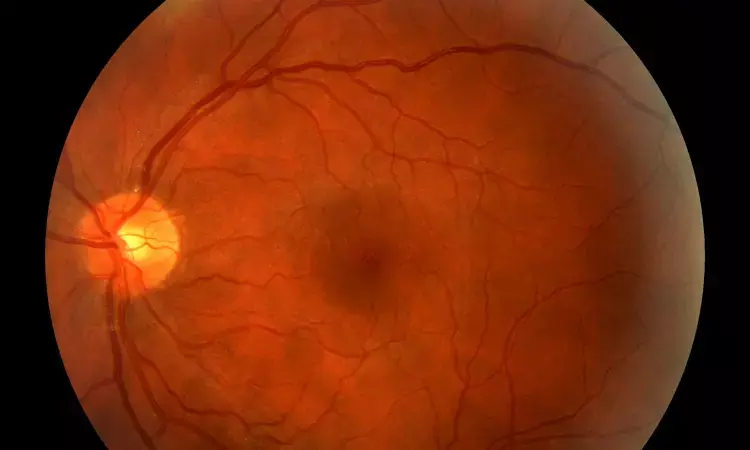- Home
- Medical news & Guidelines
- Anesthesiology
- Cardiology and CTVS
- Critical Care
- Dentistry
- Dermatology
- Diabetes and Endocrinology
- ENT
- Gastroenterology
- Medicine
- Nephrology
- Neurology
- Obstretics-Gynaecology
- Oncology
- Ophthalmology
- Orthopaedics
- Pediatrics-Neonatology
- Psychiatry
- Pulmonology
- Radiology
- Surgery
- Urology
- Laboratory Medicine
- Diet
- Nursing
- Paramedical
- Physiotherapy
- Health news
- Fact Check
- Bone Health Fact Check
- Brain Health Fact Check
- Cancer Related Fact Check
- Child Care Fact Check
- Dental and oral health fact check
- Diabetes and metabolic health fact check
- Diet and Nutrition Fact Check
- Eye and ENT Care Fact Check
- Fitness fact check
- Gut health fact check
- Heart health fact check
- Kidney health fact check
- Medical education fact check
- Men's health fact check
- Respiratory fact check
- Skin and hair care fact check
- Vaccine and Immunization fact check
- Women's health fact check
- AYUSH
- State News
- Andaman and Nicobar Islands
- Andhra Pradesh
- Arunachal Pradesh
- Assam
- Bihar
- Chandigarh
- Chattisgarh
- Dadra and Nagar Haveli
- Daman and Diu
- Delhi
- Goa
- Gujarat
- Haryana
- Himachal Pradesh
- Jammu & Kashmir
- Jharkhand
- Karnataka
- Kerala
- Ladakh
- Lakshadweep
- Madhya Pradesh
- Maharashtra
- Manipur
- Meghalaya
- Mizoram
- Nagaland
- Odisha
- Puducherry
- Punjab
- Rajasthan
- Sikkim
- Tamil Nadu
- Telangana
- Tripura
- Uttar Pradesh
- Uttrakhand
- West Bengal
- Medical Education
- Industry
Albuminuria in diabetic patients increases risk of diabetic retinopathy

In individuals with diabetic macular edema (DME), albuminuria is linked with a greater degree of diabetic retinopathy (DR) and a poor response to antiangiogenic treatment, says an article published in International Ophthalmology Journal.
Diabetes mellitus (DM) is among the world's most common chronic illnesses, and its incidence is expected to rise. DR and DME are two of the most common microvascular problems in diabetic patients, with DME causing vision loss in people of working age and having a significant financial impact. Ane Gibelalde and colleagues undertook this study to investigate the probable link between renal function and the severity of DR, as well as the degree of response to DME therapy, because studies provide conflicting data about the association of albuminuria with diabetic eye disease.
A total of 367 individuals were recruited and divided into three groups: simple diabetic retinopathy (n = 97), proliferative diabetic retinopathy (n = 94), and DME (n = 175). Similarly, patients with DME were separated into two groups: those who responded to antiangiogenic medications (n = 96) and those who did not (n = 79). The researchers looked at age, diabetes type, arterial hypertension (AHT), creatinine, HbA1c, albuminuria, and glomerular filtration rate. The chi-square test and the t student were employed in the statistical analysis to compare each group. A binary logistic regression model was used to estimate the odds ratio and confidence intervals for the connection between albuminuria and responsiveness to therapy in the DME group.
The key findings of this study were:
1. In regards to the presence or absence of albuminuria, the three major groupings differ.
2. Albuminuria is more common in individuals who have more severe DR (PDR and DME) than in persons with simple DR.
3. A positive link was discovered in the logistic regression analysis model, and the odds ratio for the albuminuria parameter is 2.78.
In conclusion, controlling factors that increase urine albumin excretion, such as AHT and smoking, may enhance the therapeutic response of individuals who do not react to antiangiogenic medicines. And so, interdisciplinary teams are required to optimize treatment outcomes.
Reference:
Gibelalde, A., Amenabar Alonso, A., Pinar-Sueiro, S., Bilbao-Garay, I., Juaristi Eizmendi, L., & Sampedro, A. (2022). Albuminuria as a biomarker of severity in diabetic retinopathy and in the response to intravitreal treatment in diabetic macular edema. In International Ophthalmology. Springer Science and Business Media LLC. https://doi.org/10.1007/s10792-022-02604-y
Neuroscience Masters graduate
Jacinthlyn Sylvia, a Neuroscience Master's graduate from Chennai has worked extensively in deciphering the neurobiology of cognition and motor control in aging. She also has spread-out exposure to Neurosurgery from her Bachelor’s. She is currently involved in active Neuro-Oncology research. She is an upcoming neuroscientist with a fiery passion for writing. Her news cover at Medical Dialogues feature recent discoveries and updates from the healthcare and biomedical research fields. She can be reached at editorial@medicaldialogues.in
Dr Kamal Kant Kohli-MBBS, DTCD- a chest specialist with more than 30 years of practice and a flair for writing clinical articles, Dr Kamal Kant Kohli joined Medical Dialogues as a Chief Editor of Medical News. Besides writing articles, as an editor, he proofreads and verifies all the medical content published on Medical Dialogues including those coming from journals, studies,medical conferences,guidelines etc. Email: drkohli@medicaldialogues.in. Contact no. 011-43720751


